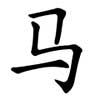

| Chinese Arts | Chinese Calligraphy | ||||||||||||||||||||||||||||||||||||||||||||||||||||||||||||||||||||||||||||||||||||||||||||||||||||||||||||||||||||||||||||||||||||||||||||||||||||||||||||||||||||||||||||||||||||
      |
Chinese calligraphy is a form of calligraphy widely practiced in China and revered in the Chinese cultural sphere. The calligraphic tradition of East Asia originated and developed from China. There is a general standardization of the various styles of calligraphy in this tradition. Chinese calligraphy and ink and wash painting are closely related, since they are accomplished using similar tools and techniques. Chinese painting and calligraphy distinguish themselves from other cultural arts because they emphasize motion and are charged with dynamic life. According to Stanley-Baker, "Calligraphy is sheer life experienced through energy in motion that is registered as traces on silk or paper, with time and rhythm in shifting space its main ingredients." Calligraphy has also led to the development of many forms of art in China, including seal carving, ornate paperweights, and inkstones.
Evolution and stylesChinese characters can be retraced to 4000 BC signs (Lu & Aiken 2004). The contemporary Chinese characters set principles were already visible in ancient China's Jiǎgǔwén characters carved on ox scapulas and tortoise plastrons around 14th - 11th century BCE (Lu & Aiken 2004). Brush-written examples decay over time and have not survived. During the divination ceremony, after the cracks were made, characters were written with a brush on the shell or bone to be later carved.(Keightley, 1978). With the development of Jīnwén (Bronzeware script) and Dàzhuàn (Large Seal Script) "cursive" signs continued. Moreover, each archaic kingdom of current China had its own set of characters.
In Imperial China, the graphs on old steles — some dating from 200 BC, and in Xiaozhuan style — are still accessible. In about 220 BC, the emperor Qin Shi Huang, the first to conquer the entire Chinese basin, imposed several reforms, among them Li Si's character unification, which created a set of 3300 standardized Xiǎozhuàn characters.Despite the fact that the main writing implement of the time was already the brush, little paper survives from this period, and the main examples of this style are on steles. The Lìshū style (clerical script) which is more regularized, and in some ways similar to modern text, were also authorised under Qin Shi Huang. Kǎishū style (traditional regular script) — still in use today — and attributed to Wang Xizhi (王羲之, 303-361) and his followers, is even more regularized. Its spread was encouraged by Emperor Mingzong of Later Tang (926-933), who ordered the printing of the classics using new wooden blocks in Kaishu. Printing technologies here allowed shapes to stabilize. The Kaishu shape of characters 1000 years ago was mostly similar to that at the end of Imperial China.But small changes have been made, for example in the shape of 广 which is not absolutely the same in the Kangxi Dictionary of 1716 as in modern books. The Kangxi and current shapes have tiny differences, while stroke order is still the same, according to old style. Styles which did not survive include Bāfēnshū, a mix of 80% Xiaozhuan style and 20% Lishu. Some Variant Chinese characters were unorthodox or locally used for centuries. They were generally understood but always rejected in official texts. Some of these unorthodox variants, in addition to some newly created characters, were incorporated in the Simplified Chinese character set.
Cursive styles such as Xíngshū (semi-cursive or running script) and Cǎoshū (cursive or grass script) are less constrained and faster, where more movements made by the writing implement are visible. These styles' stroke orders vary more, sometimes creating radically different forms. They are descended from Clerical script, in the same time as Regular script (Han Dynasty), but Xíngshū and Cǎoshū were used for personal notes only, and were never used as standard. Caoshu style was highly appreciated during the reign of Emperor Wu of Han (140 BC−87BC).
Examples of modern printed styles are Song from the Song Dynasty's printing press, and sans-serif. These are not considered traditional styles, and are normally not written. the evolution of character "horse"
|
||||||||||||||||||||||||||||||||||||||||||||||||||||||||||||||||||||||||||||||||||||||||||||||||||||||||||||||||||||||||||||||||||||||||||||||||||||||||||||||||||||||||||||||||||||
wechat or phone call (+86) 13923481710
support@edward-chinese.com
Bai Hua Plaza,10th floor,Room 1011-1012,Chan Cheng District, Foshan,China


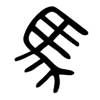
.jpg)
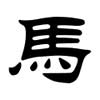
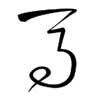
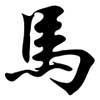
.jpg)
